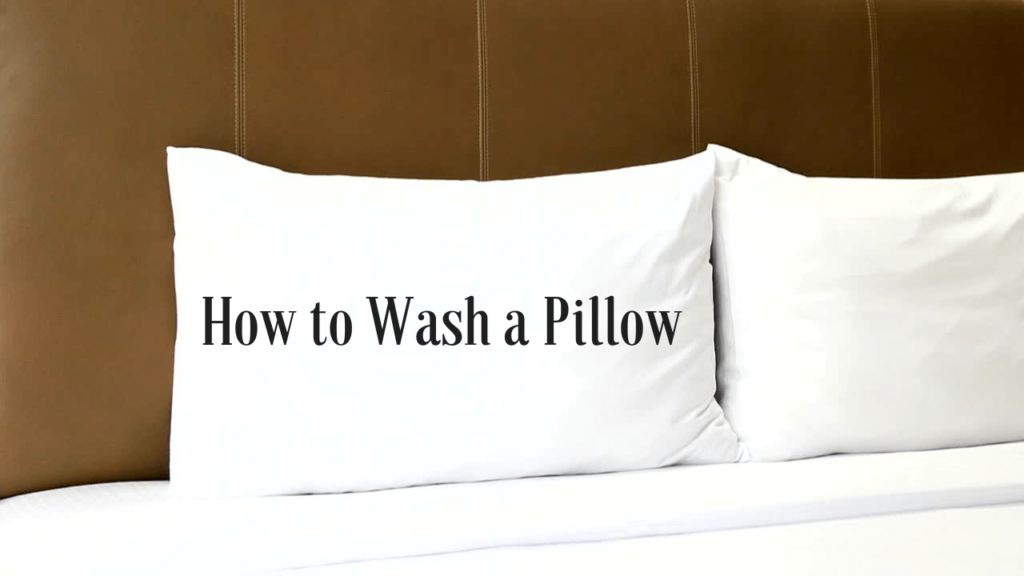Pillow covers are essential for keeping your pillows clean and extending their lifespan. Over time, they collect dust, sweat, oils, and allergens, so washing them regularly is crucial. This guide will show you step-by-step how to wash pillow covers effectively in Ireland, whether by hand or in the washing machine, with tips for eco-friendly practices and proper care.
Why Wash Your Pillow Covers Regularly?
Regularly cleaning pillow covers offers many benefits:
- Hygiene: Removes bacteria, allergens, and dust mites.
- Freshness: Keeps pillow covers smelling clean and fresh.
- Skin Health: Reduces breakouts and skin irritation caused by dirt and oils.
- Durability: Extends the life of your pillow covers and pillows.
How Often Should You Wash Pillow Covers?
The frequency of washing depends on usage and environmental factors:
| Usage | Washing Frequency |
|---|---|
| Daily use without additional covers | Once a week |
| With a protective pillowcase | Every two weeks |
| If you have allergies or pets | Weekly or more frequently |
Materials and Their Washing Requirements
Not all pillow covers are made the same. Here’s a guide to different materials and their cleaning needs:
| Material | Machine Washable? | Special Care Instructions |
|---|---|---|
| Cotton | Yes | Wash in warm or cold water; avoid bleach. |
| Polyester | Yes | Use a gentle cycle with mild detergent. |
| Silk | No | Hand wash or use a delicate cycle; air dry. |
| Linen | Yes | Use cold water to prevent shrinkage. |
| Satin | Yes (delicate) | Wash in a laundry bag on a gentle cycle. |
| Blends (e.g., cotton-polyester) | Yes | Follow care label instructions. |
What You’ll Need
Before starting, gather these supplies:
- Mild detergent (fragrance-free if you have sensitive skin).
- Stain remover for tough stains.
- A washing machine or basin for hand washing.
- A laundry bag for delicate fabrics.
- A drying rack or clean towel for air drying.
How to Wash Pillow Covers in a Washing Machine
Most pillow covers can be safely washed in a machine. Follow these steps for the best results:
1. Check the Care Label
- Look for washing symbols and temperature recommendations.
- Ensure the material is machine washable.
2. Pre-Treat Stains
- Apply a small amount of stain remover to visible spots.
- Let it sit for 10-15 minutes before washing.
3. Choose the Right Detergent
- Use a mild detergent to avoid damage to the fabric.
4. Set the Washing Machine
- Select a gentle cycle with cold or warm water (depending on the material).
- Avoid hot water, which can shrink or damage fabrics.
5. Load the Machine
- Place pillow covers in a mesh laundry bag for added protection.
- Wash with similar colors to prevent bleeding.
6. Start the Wash
- Run the cycle and avoid overloading the machine.
7. Dry Carefully
- Air drying is ideal for most materials.
- If using a dryer, select a low-heat setting.
How to Hand Wash Pillow Covers
For delicate fabrics like silk or satin, hand washing is the safest option.
1. Prepare the Basin
- Fill a basin or sink with lukewarm water.
- Add a small amount of mild detergent.
2. Soak the Covers
- Submerge the pillow covers and let them soak for 10-15 minutes.
3. Gently Clean
- Swirl the fabric in the water. Avoid scrubbing, as it may damage the fibers.
4. Rinse Thoroughly
- Rinse under clean, cool water until no soap remains.
5. Remove Excess Water
- Gently press the pillow covers to remove water. Avoid wringing them out.
6. Air Dry
- Lay flat on a clean towel or hang on a drying rack. Keep out of direct sunlight.
Drying Methods for Pillow Covers
Proper drying ensures your pillow covers remain in good condition:
| Drying Method | Suitable For | Tips |
|---|---|---|
| Air Drying | All fabrics | Lay flat or hang; avoid direct sunlight for delicate fabrics. |
| Tumble Drying | Cotton, Polyester | Use a low-heat setting to prevent shrinkage. |
| Line Drying | Linen, Cotton | Shake out wrinkles before hanging. |
Eco-Friendly Tips for Washing Pillow Covers in Ireland
- Use Eco-Friendly Detergents
- Choose biodegradable or plant-based detergents available at Irish stores like Tesco or Dunnes.
- Wash in Cold Water
- Save energy by avoiding hot water cycles.
- Air Dry Whenever Possible
- Reduces energy consumption and protects delicate fabrics.
- Spot Clean Small Stains
- Minimize water use by addressing minor stains immediately.
Troubleshooting Common Problems
Problem: Pillow cover shrank after washing.
- Solution: Always follow the care label and use cold water for delicate materials.
Problem: Stubborn stains won’t come out.
- Solution: Pre-treat with a mix of baking soda and water, or use a fabric-safe stain remover.
Problem: Fabric feels rough after washing.
- Solution: Add a small amount of white vinegar to the rinse cycle to soften the fabric.
Quick Checklist for Washing Pillow Covers
- Check the care label.
- Pre-treat stains.
- Use a mild detergent.
- Wash on a gentle cycle or hand wash.
- Air dry or tumble dry on low heat.
Where to Buy Pillow Care Supplies in Ireland
- Supermarkets: Tesco, Dunnes Stores, Lidl (detergents, stain removers).
- Online: Amazon Ireland, Argos (laundry bags, fabric softeners).
- Specialty Stores: Homebase, Harvey Norman (drying racks, eco-friendly products).
Conclusion
Washing your pillow covers regularly is a simple way to maintain hygiene, protect your pillows, and enhance your sleeping environment. By following these easy steps and tips, you can keep your pillow covers clean and fresh, ensuring a comfortable and healthy sleep.

Hi, I’m Tanvir, the founder and author of Explore Ireland Now. With a deep love for Ireland and its rich culture, history, and landscapes, I created this site to share everything that makes this beautiful country worth exploring. Whether you’re a local looking for hidden gems or a traveler planning your next adventure, I provide insightful guides, tips, and recommendations to help you experience Ireland to the fullest.
From stunning landscapes to vibrant cities and quaint villages, Ireland is full of wonders waiting to be discovered. Through my personal experiences and research, I aim to bring you the most up-to-date information and inspiration for your journey.
Thank you for visiting Explore Ireland Now—I hope my content helps you uncover all that this incredible country has to offer! If you have any questions or need travel advice, feel free to reach out.



